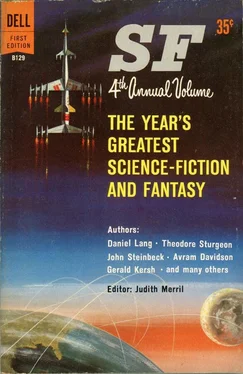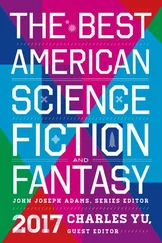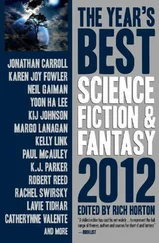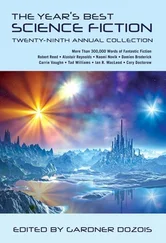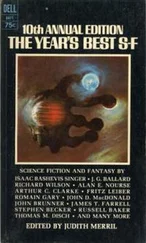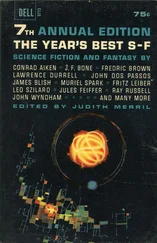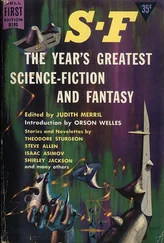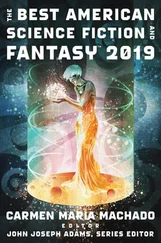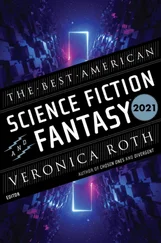Judith Merril - The Year's Greatest Science Fiction & Fantasy 4
Здесь есть возможность читать онлайн «Judith Merril - The Year's Greatest Science Fiction & Fantasy 4» весь текст электронной книги совершенно бесплатно (целиком полную версию без сокращений). В некоторых случаях можно слушать аудио, скачать через торрент в формате fb2 и присутствует краткое содержание. Год выпуска: 1959, Издательство: Dell, Жанр: Фантастика и фэнтези, на английском языке. Описание произведения, (предисловие) а так же отзывы посетителей доступны на портале библиотеки ЛибКат.
- Название:The Year's Greatest Science Fiction & Fantasy 4
- Автор:
- Издательство:Dell
- Жанр:
- Год:1959
- ISBN:нет данных
- Рейтинг книги:5 / 5. Голосов: 1
-
Избранное:Добавить в избранное
- Отзывы:
-
Ваша оценка:
- 100
- 1
- 2
- 3
- 4
- 5
The Year's Greatest Science Fiction & Fantasy 4: краткое содержание, описание и аннотация
Предлагаем к чтению аннотацию, описание, краткое содержание или предисловие (зависит от того, что написал сам автор книги «The Year's Greatest Science Fiction & Fantasy 4»). Если вы не нашли необходимую информацию о книге — напишите в комментариях, мы постараемся отыскать её.
The Year's Greatest Science Fiction & Fantasy 4 — читать онлайн бесплатно полную книгу (весь текст) целиком
Ниже представлен текст книги, разбитый по страницам. Система сохранения места последней прочитанной страницы, позволяет с удобством читать онлайн бесплатно книгу «The Year's Greatest Science Fiction & Fantasy 4», без необходимости каждый раз заново искать на чём Вы остановились. Поставьте закладку, и сможете в любой момент перейти на страницу, на которой закончили чтение.
Интервал:
Закладка:
Or consider these bits from a piece published last year on the possible future uses of parapsychology.
“The real idea ... is to employ the waves or impulses for long-range transmission of messages, and even for the near-fantastic purpose of moving or influencing inanimate objects at great distances. . . . One group . . . has advanced the idea that the brain wave amplification concept offers a possible means of communication between space ships.. ..” And the theory is proposed “that the measurable electrical impulses given off by the human brain are products of a body chemical reaction much in the same way that noise is a product of a combustion engine, and that the true brain waves making possible extra-sensory perception are something else again and not yet understood. . . .”
The article also claims that many “scientists of the highest repute” have come to believe “that there definitely is a special group of humans having the power or gift of transferring thought from mind to mind, and influencing consistently the dice in a game of chance.”
Now there would be nothing of special note in all this, except that the scientists referred to are not the hand-picked group of known “crackpots” who would have been quoted in an article of the same sort in a science-fantasy magazine ten, five, or just two years ago. They are working engineers and research men at Westinghouse’s laboratory in Friendship, Md., at the famous Rand Development Corporation in Cleveland, and at the Army’s Redstone, Alabama, missile development center.
The article, which appeared in the Sunday N. Y. Herald Tribune on July 13, 1958, was written by that paper’s military and aviation editor, Ansel E. Talbert. It starts out: “An amazing series of projects ... are receiving serious study in the research branches of the United States armed forces.” It closes with a paragraph quoting Col. William Bowers, director of biological sciences in the Air Force Office of Scientific Research, as being “tremendously interested” in finding out “whether messages and even energy emanating from the human brain can be transmitted over thousands of miles. . . .”
“Science-advance” and “disciplined imagination” are no longer the esoteric intellectual entertainment of a specialized cult; it is to be expected that the literature of logical speculation will not for long retain its discrete identity. And if any further evidence were needed, it could be found in the ranks of s-f authors: both in the fast-growing roster of new names attracted to science fantasy, and in the attitudes expressed by older writers in the field.
For the past three years, an annual Science-Fiction Writers’ Conference has been held at Milford, Pa. Discussions at these meetings cover every facet of the writer’s craft, with special reference to science fantasy: markets, agents, editors, critics, research sources, and the basic subjective problems of writing itself. During the 1958 sessions, one point of view emerged repeatedly: the writers who had been in s-f for any length of time, almost to a man wanted to get out—but to take it with them as they went. Some wanted the greater literary freedom of the book form; some wanted to get away from “gimmicks”; others wanted editors without established s-f conventions.
“I want to say the same kind of thing, but I’m tired of saying it to the same people,” some of them summed it up. But one way or another, almost all wanted to write “a sort of s-f” or “something in between s-f and mainline fiction,” for a wider market.
S-f (the category) is, if not dead, moribund; then long live s-f (the literature, and way of thinking)!
In a year of disquieting news all round in the s-f marketplace, the saddest single item—after the untimely deaths of Henry Kuttner and C. M. Kornbluth—was the retirement of Anthony Boucher from the editorial chair of Fantasy and Science Fiction. From its first issue in 1949, through five years of co-editorship by Boucher and J. Francis McComas, and five more of Mr. Boucher’s solo guidance, F&SF reflected his distinctive editorial personality, and exercised a potent influence on science fantasy as a whole, by supplying a sorely needed critical standard to a field which had grown up with pulp traditions and which was often marked by careless prose and stock characterizations.
Wide erudition and keen intelligence are professional requirements for the science-fiction editor, but Tony Boucher was the first to add a discerning sensitivity to good writing. ,
Consoling notes: One of the reasons Boucher gave for leaving the magazine was the hope of finding more time for his own writing. And the selection of Robert P. Mills, who edited F&SF’s (more brother, by its personality, than) sister magazine, Venture, to fill the slot on the older magazine, gives hope that the new F&SF will take on some of the invigorating freshness he injected into the short-lived Venture.
Also worthy of special mention is the changeover in Satellite, formerly a digest-size bimonthly, now a large-size, smooth-paper monthly magazine. The experiment with a “slick” format was last tried some years ago by Hugo Gernsback; from what I’ve seen so far of the new Satellite, I think its chances are a good bit better than Science Fiction Plus ever had. In any case, it’s an effort everyone in the field will be watching with interest, and one I personally hope will succeed.
Special mention for merit, outside the realm of the Honorable Mention listings that follow, go this year to:
Karen Anderson for “In Memoriam: Henry Kuttner,” as heartfelt and apropos a eulogy as ever I have read or heard.
Vladimir Nabokov’s Nabokov’s Dozen (Doubleday), which contains some wonderful fantasy, reprints of previously printed stories.
Ron Smith, Dave Foley, and Bob Leman for their sidesplitting parody of F&SF in Inside Science Fiction.
Peter Ustinov, whose publishers wouldn’t permit us to include his charming Atlantic story, “The Man in the Moon” in this volume.
—J. M.
HONORABLE MENTIONS
The following books and magazines are represented in the Honorable Mentions list for 1958; abbreviations used in the list are indicated to the left of titles.
Science-Fantasy Magazines:
Amz Amazing Science Fiction Stories
Ast Astounding Science Fiction
F&SF Fantasy and Science Fiction
Fant Fantastic
FU Fantastic Universe
Fut Future Science Fiction
Gal Galaxy Science Fiction
If If Magazine
Inf Infinity Science Fiction
Neb Nebula Science Fiction (British)
NW New Worlds (British)
OSFS Original Science Fiction Stories
Satl Satellite Science Fiction
SciF Science Fantasy (British)
Star Star Science Fiction
Sup Super-Science Fiction
Vent Venture Science Fiction
General Magazines:
Adam Adam
Arg Argosy
Atl Atlantic Monthly (Anniversary Issue)
Cos Cosmopolitan
Dec December
Esq Esquire
Harp Harper’s
Plby Playboy
Rogue Rogue
SEP Saturday Evening Post
Swank Swank
Books:
“MBM” A Mile Beyond the Moon; C. M. Kornbluth (Doubleday, 1958)
“SIS” Station in Space; James Gunn (Bantam, 1958)
“Star#4” Star Science Fiction Stories, #4; ed.: Frederik Pohl (Ballantine, 1958)
“TGR” The Graveyard Reader; ed.: Groff Conklin (Ballantine, 1958)
Читать дальшеИнтервал:
Закладка:
Похожие книги на «The Year's Greatest Science Fiction & Fantasy 4»
Представляем Вашему вниманию похожие книги на «The Year's Greatest Science Fiction & Fantasy 4» списком для выбора. Мы отобрали схожую по названию и смыслу литературу в надежде предоставить читателям больше вариантов отыскать новые, интересные, ещё непрочитанные произведения.
Обсуждение, отзывы о книге «The Year's Greatest Science Fiction & Fantasy 4» и просто собственные мнения читателей. Оставьте ваши комментарии, напишите, что Вы думаете о произведении, его смысле или главных героях. Укажите что конкретно понравилось, а что нет, и почему Вы так считаете.
